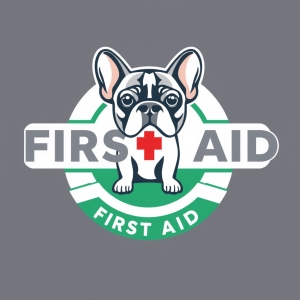Why Every Dog Owner Needs a First Aid Kit
We never expect accidents to happen—but when they do, being prepared can make all the difference. Whether you’re exploring a busy city street or wandering through the woods, your dog is exposed to many hidden dangers: sharp glass on sidewalks, insect bites, heatstroke, allergic reactions, or even unexpected injuries from playing too hard.
That’s why a dog first aid kit is not just a “nice-to-have”—it’s an essential. It shows you care and that you’re ready to protect your furry friend in any situation. You don’t need to be a vet, just a prepared and responsible pet parent. Let’s break down what you should pack for peace of mind on every walk or hike.
10 Must-Have Items
🧰 1. Sterile gauze and bandages
For covering wounds and stopping bleeding.
💧 2. Pet-safe antiseptic solution (no alcohol!)
Recommended: Povidone-iodine or chlorhexidine solution.
🕷️ 3. Tick remover or tweezers
Great for removing ticks, thorns, or splinters after a hike.
✂️ 4. Blunt-tipped scissors
Safe for trimming fur around injuries or cutting bandages.
🧤 5. Disposable gloves
Protect you and your dog during emergencies.
🐾 6. Paw balm or protective wax
Ideal for hot sidewalks or rough terrain.
🧊 7. Cold pack (instant type)
Useful for swelling, sprains, or insect stings.
🧴 8. Antihistamine gel or allergy relief
Always consult your vet first about safe products and dosage.
🧢 9. Collapsible water bowl and bottled water
Hydration is key—especially in the heat!
🆘 10. Emergency contact card (vet info + basic CPR steps)
Keep numbers and quick-reference instructions handy.
Urban Walks vs. Nature Hikes
| Item | City Walks | Nature Hikes |
|---|---|---|
| Gauze and bandages | ✅ | ✅ |
| Antiseptic solution | ✅ | ✅ |
| Tick remover | ❌ | ✅ |
| Paw protection balm | ✅ | ✅ |
| Cold pack | ✅ | ✅ |
| Antihistamine | ❌ | ✅ |
| Water + bowl | ✅ | ✅ |
| Emergency contact info | ✅ | ✅ |
🎥 Watch and Learn: Dog First Aid Basics
Recommended YouTube Video:
👉 How to Give First Aid to Your Dog – Vet Approved Tips
(by Dr. Alex Avery – Our Pets Health)
A short and informative video that covers wound care, choking, heatstroke, and more—perfect for beginners.
🔗 Useful Websites for Pet First Aid and Safety
- American Red Cross – Pet First Aid App & Training
👉 https://www.redcross.org/take-a-class/first-aid/cat-dog-first-aid
Learn pet CPR, wound care, and emergency response. Includes downloadable app with step-by-step instructions.
- ASPCA – Dog Health and Safety Tips
👉 https://www.aspca.org/pet-care/dog-care/dog-care-safety
Preventative care tips, toxic substance guides, and what to do in emergencies.
- AVMA – American Veterinary Medical Association
👉 https://www.avma.org/resources/pet-owners/petcare/pet-first-aid
Vet-approved first aid guidelines for pet owners, including printable checklists.
- PetMD – Dog Emergency Guides
👉 https://www.petmd.com/dog/emergency
Detailed explanations of common emergencies like seizures, poisoning, or injury.
❓ Frequently Asked Questions (FAQ)
How often should I check my dog’s first aid kit?
At least once a month. Refill anything you’ve used and replace items that are expired or damaged. It’s also a good time to make sure your contact list is up to date with your vet’s latest info.
Can my dog carry its own first aid supplies?
Yes! Many dogs enjoy wearing lightweight backpacks. Just make sure the load is balanced, not too heavy, and that your dog is healthy enough for it. Always start slow and watch how your dog reacts.
Can I use human products on my dog?
Some, but not all. For example, human antiseptics may be too harsh for dogs. Always choose pet-safe options or consult your vet before using any human product on your pup.
What should I do if my dog is bitten by a snake or stung by a bee?
Stay calm and move your dog away from the danger. For bee stings, remove the stinger and apply a cold compress. If it’s a snake bite, keep your dog as still as possible and get to the vet immediately. In both cases, call your vet right away.
Should I take a pet first aid course?
Absolutely! Many local animal shelters, vet clinics, and online platforms offer basic pet CPR and first aid classes. They’re short, easy to follow, and could be life-saving one day.
What’s the best way to store the dog first aid kit?
Use a small waterproof pouch or container and keep one at home, and another in your car or hiking backpack. Label it clearly and store it in an easy-to-reach spot during your outings.
Preparation Is Love in Action
Being prepared is more than carrying a kit—it’s an act of love and responsibility. Your dog depends on you not just for food and cuddles, but also for safety in unexpected situations. A simple bandage or antiseptic can turn a scary moment into a manageable one. Imagine being out on a trail and noticing your dog limping—having the right supplies in that moment can mean everything.
A dog first aid kit doesn’t have to be expensive or bulky. Even a few basic items can prevent small issues from becoming serious. Most importantly, it empowers you to stay calm and take action when your best friend needs you most.
So take that extra step today. Build your kit. Keep it close. Be your dog’s hero—not just in the fun moments, but in the tough ones too. Because love, at its core, is being there no matter what. 🐾💖

